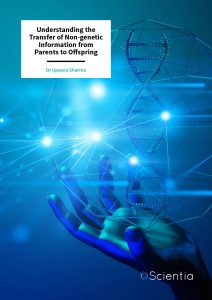Dr Upasna Sharma | Understanding the Transfer of Non-genetic Information from Parents to Offspring
The transfer of genetic information from a parent to their offspring via deoxyribonucleic acid (DNA) is fundamental for the survival of a species. Evidence is emerging that epigenetic information – information independent of underlying DNA sequence – can also be transmitted to offspring and that parental environment can alter epigenetic information and influence the characteristics of future generations. Dr Upasna Sharma’s work as a postdoctoral researcher at the University of Massachusetts Chan Medical School discovered a previously undescribed mode of epigenetic inheritance in sperm, and provides evidence that paternal diet can influence the descendants’ metabolic state via epigenetic mechanisms.
The Evidence for Epigenetics
Whilst it is accepted that genomic deoxyribonucleic acid (DNA) is responsible for most of the inheritance from parent to offspring, there is increasing evidence that information unrelated to the DNA sequence is also passed on to future generations, and furthermore, that the environment to which the parents are exposed can influence the attributes of their offspring. The dietary habits of the father, for example, can alter how offspring synthesise metabolic compounds.
Dr Upasna Sharma and colleagues in the Department of Biochemistry and Molecular Pharmacology at the University of Massachusetts Chan Medical School, USA, report intriguing findings regarding the influence of paternal diet on the constituents of sperm during the maturation process. They have now deciphered a mechanism via which these constituents are transferred into the sperm from somatic cells.
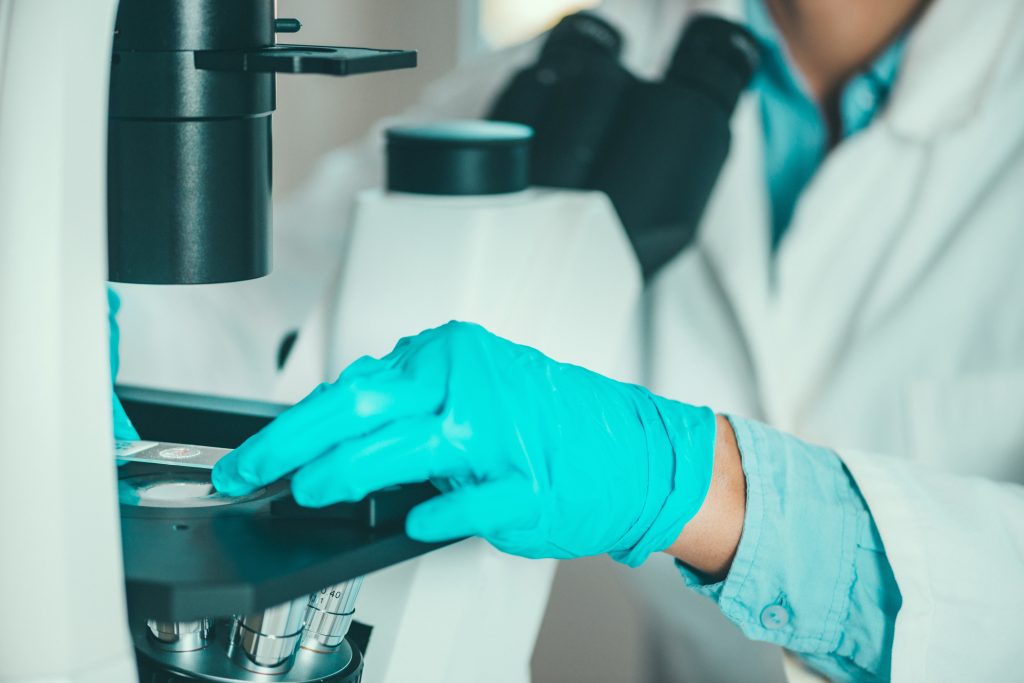
The Effect of Paternal Diet
Ribonucleic acid (RNA) is an omnipresent substance which contributes to the implementation of a wide range of bodily functions and exists in different forms, including transfer RNA (tRNA), a small molecule with a role in protein synthesis. However, pieces of tRNA which have an alternative purpose may also be present in cells such as sperm.
A growing body of evidence suggests that parental environment can affect the metabolic health and physiology of their offspring in a phenomenon known as the intergenerational inheritance of acquired traits, or epigenetic inheritance, although the mechanisms by which this occurs are poorly understood. Indeed, until recently, the theory of intergenerational inheritance was all but dismissed due to a lack of explanation regarding the potential mode of action and the presumed inability of somatic cells to transmit information to germ cells.
Though notoriously tricky to demonstrate, Dr Sharma and her colleagues endeavoured to investigate non-DNA driven inheritance via sperm and the possible ways in which this might happen. They began by determining whether paternal diet could indeed influence the metabolism in offspring generated by in vitro fertilisation. The group used sperm from mice who were fed a low-protein diet and found that their descendants displayed altered hepatic cholesterol biosynthesis in comparison to regular-diet controls, thus confirming their hypothesis. These findings also corroborated their previously published work.
Small RNAs are implicated in a variety of non-genetic processes and are one of the most established carriers of epigenetic information. For this reason, the team proceeded to examine the presence of small RNAs within mature mammalian sperm. They discovered an abundance of fragments generated by the cleavage of non-coding tRNAs (tRFs) which were further upregulated in the sperm of mice consuming a low-protein diet. Further analysis revealed very low levels of tRFs in the testes and immature sperm, raising the question of when exactly the sperm acquire these tRFs.
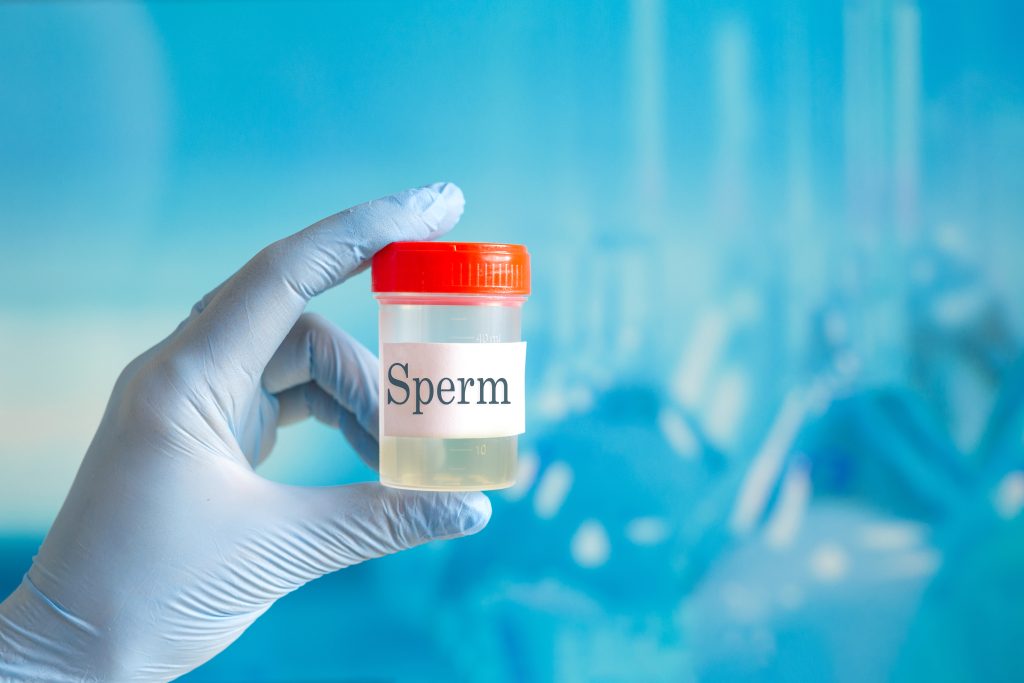
The Maturing Sperm
After leaving the testis, sperm complete their maturation whilst travelling through the epididymis, a long, convoluted, tubular organ in which the concentration of tRFs increases between the entry point (caput) and exit point (cauda). During this transit, the sperm fuse with small vesicles called epididymosomes which exhibit a pattern of small RNAs like that seen in cauda sperm. This prompted Dr Sharma and the team to speculate that epididymosomes transfer tRFs into the sperm during the maturation process. Analysing immature sperm which had been incubated with epididymosomes isolated from the cauda did indeed show that fusion occurred, resulting in delivery of tRFs.
Interfering with the function of specific tRFs in an embryonic stem cell model resulted in dramatic changes in gene regulation, with some of the most prominently activated genes also known to be highly expressed in preimplantation embryos. To this end, Dr Sharma and colleagues investigated whether embryos derived from low-protein diet sperm, which carry higher levels of tRFs, affected the same target genes. Using mature sperm from low-protein diet mice or injection of specific tRFs in control embryos, they were able to determine that embryonic gene expression was altered in both cases, hence concluding that gene regulation in early embryos is influenced by sperm tRFs.
Most interestingly, embryos derived from low protein diet sperm demonstrated delayed development in comparison to controls, and this may be partly associated with the vital role that sperm small RNAs play during implantation and early embryonic development.
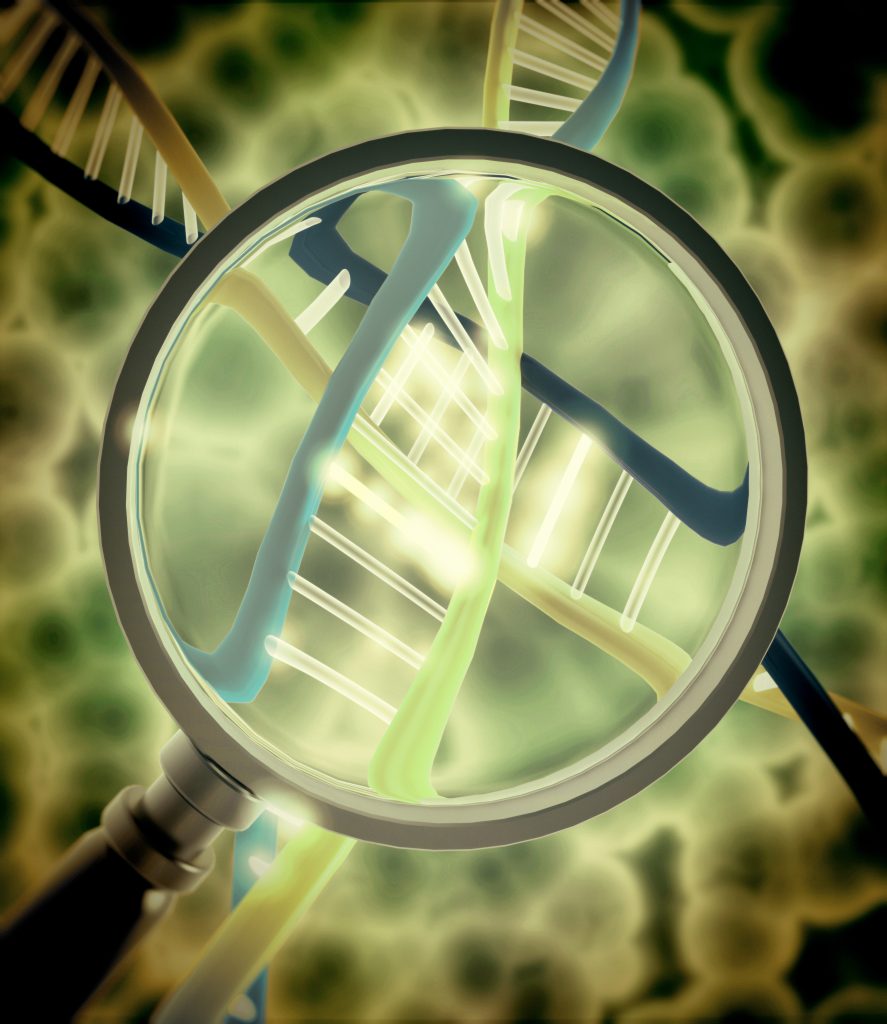
Small RNA Dynamics
Having made these remarkable discoveries, in addition to confirming their initial findings regarding tRF delivery via the epididymal cells, Dr Sharma and the research team determined that the RNA payload in sperm switches from one type of small RNA to another after exiting the testis.
It is widely accepted that small RNAs have a key role in gene regulation, as demonstrated in several animal models including mammals. Small RNAs exist in a variety of biodiverse forms which each possess a unique regulatory function; for example, piRNAs are deemed essential for silencing the transposable ‘jumping’ elements in the genome and comprise the main small RNA population in the testes and testicular sperm populations.
Exceptionally low levels of tRFs are detected in testicular sperm, which suggests that sperm only gain tRFs upon entry into the epididymis. The fact that tRFs make up only around 2% of testicular RNAs but are the most abundant form in mature sperm from the epididymis piqued the interest of Dr Sharma and colleagues, inspiring them to investigate the temporal dynamic processes involved in the gain and loss of small RNAs from sperm during epididymal maturation.
Samples containing sperm of varying maturity were extracted from both the testicular and epididymal regions and assessed for their RNA content after washing with a previously validated method. Following this, sperm were physically separated into heads and tails to evaluate the subcellular location of small RNAs. Tails were found to be highly enriched with piRNAs, and whilst tRFs were more equally distributed between tails and heads, some tRFs were moderately more abundant in heads, suggesting that a subset of small RNAs can be transmitted from sperm to oocyte at fertilisation. These findings provided a more detailed insight into the distribution of small RNA populations in the sperm and male reproductive tract and laid strong foundations for further exploration.
Next, small RNA dynamics in various germ cell populations in testis and epididymal sperm were examined by sequencing small RNAs. Interestingly, a consistent decrease in the overall levels of piRNA was observed as the sperm moved from the testis to the epididymis, followed by an extraordinary increase in tRFs in the caput and cauda sperm. This suggested that the remodelling of the small RNA payload in post-testicular sperm is attributable to a combination of piRNA degradation and tRF gain, which continues throughout the epididymal journey.
One curious occurrence observed during these elegant experiments was the seemingly undulating concentrations of certain small RNAs in different regions of the reproductive tract, with a marked reduction seen in caput sperm compared to testicular and cauda sperm, implying that small RNAs are lost upon exit from the testis and replenished by epididymosomes in the epididymis. Complex molecular cell tracking procedures confirmed that at least some of the small RNAs present in mature sperm are synthesised within the somatic caput epididymis epithelial cells.
Next, using elaborate laboratory techniques, Dr Sharma and her research partners deduced that the small RNAs carried by mature cauda sperm were first manufactured in the epididymal epithelial cells prior to transfer into the sperm via epididymosomes, thus verifying their earlier findings and reaffirming a unique interaction between somatic and germ cells to facilitate the delivery of small RNAs into post-testicular sperm.
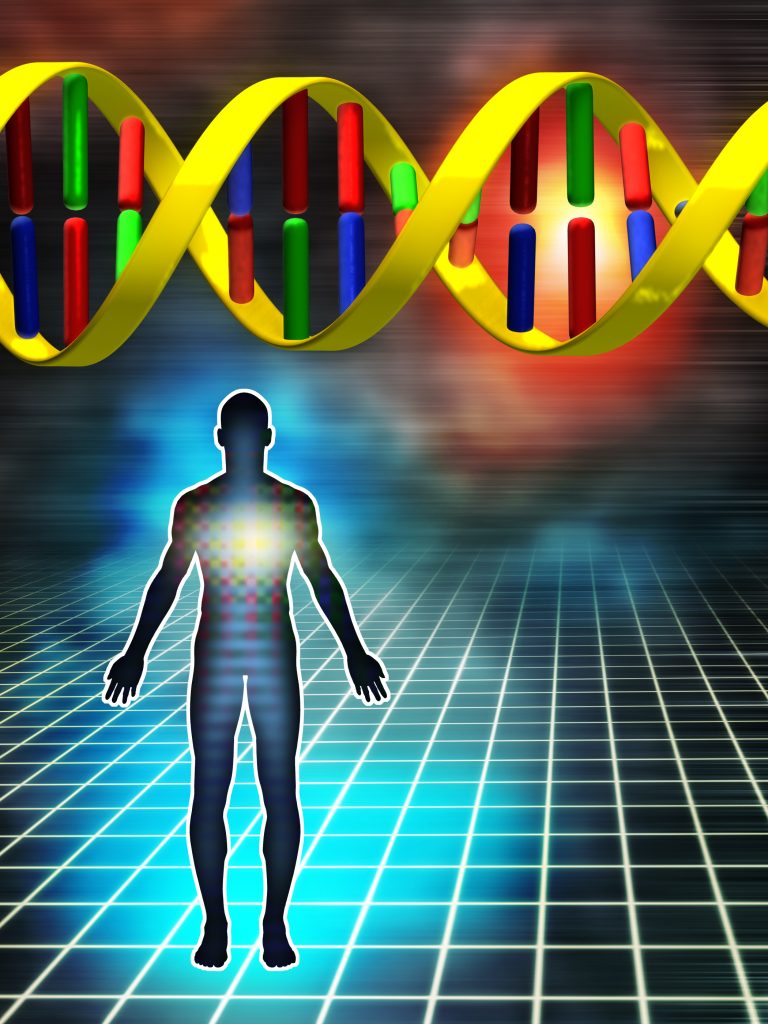
Predicting Inheritance, Treating Disease?
In a recently published comprehensive review, Dr Sharma, now heading her own independent laboratory at the University of California Santa Cruz, succinctly summarises the latest developments in this emerging area of research, and explores some of the concepts, evidence, and mechanisms involved in intergenerational inheritance driven by small RNAs in sperm, much of which validates Dr Sharma’s findings.
Certainly, this fascinating work has demonstrated that paternal diet plays an important role in regulating the epigenetic composition of sperm, and that information inherited by the offspring can alter their observable characteristics. Furthermore, the discovery that epididymosomes deliver tRFs into the sperm constitutes the identification of a now patented mechanism of action for the transfer of small RNA fragments from somatic cells into germ cells and describes a novel epigenetic reprogramming event not previously observed during mammalian spermatogenesis.
Dr Sharma’s current research aims to understand the molecular basis of selecting, sorting, and packing small RNAs into epididymosomes that could reveal the precise mechanisms of cell-cell communication and may increase our knowledge regarding the way in which environmental information is signalled to sperm for ultimate transfer to offspring. Moreover, this might help to explain how changes in environmental conditions lead to tRF modifications and stability. Vitally, understanding the mechanism of intergenerational inheritance and its contribution to metabolic conditions in progeny may prove invaluable in the study and treatment of common metabolic diseases, such as diabetes.
SHARE
DOWNLOAD E-BOOK
REFERENCE
https://doi.org/10.33548/SCIENTIA924
MEET THE RESEARCHER

Dr Upasna Sharma
University of California
Santa Cruz, CA
USA
Dr Upasna Sharma received her PhD in Molecular Biology and Biochemistry from Wesleyan University, Connecticut, and proceeded to complete her postdoctoral training at the University of Massachusetts Chan Medical School. Currently, Dr Sharma holds a post as Assistant Professor of Molecular, Cell, and Developmental Biology, and heads her own research laboratory. The primary focus of Dr Sharma’s intriguing research is to investigate the mechanisms underpinning epigenetic inheritance from parent to offspring, and the implications this may have for future generations. In addition to acquiring an impressive portfolio of grants to support her work and acting as a reviewer for international grant agencies and several high-impact journals, Dr Sharma is the recipient of many prestigious awards and has contributed immeasurably to the field of reproductive tract biology and preimplantation development.
CONTACT
E: upsharma@ucsc.edu
W: https://sharmalab.sites.ucsc.edu/
T: https://twitter.com/sharmalab_ucsc?lang=en
FUNDING
Charles H. Hood Foundation
National Institutes of Health
Searle Scholars Program
John Templeton Foundation
FURTHER READING
U Sharma, Paternal Contributions to Offspring Health: Role of Sperm Small RNAs in Intergenerational Transmission of Epigenetic Information, Frontiers in Cell and Developmental Biology, 2019, 7, 215. DOI: https://doi.org/10.3389/fcell.2019.00215
U Sharma, F Sun, CC Conine, et al., Small RNAs Are Trafficked from the Epididymis to Developing Mammalian Sperm, Developmental Cell, 2018, 46(4), 481–494.e6. DOI: https://doi.org/10.1016/j.devcel.2018.06.023
U Sharma, CC Conine, JM Shea, et al., Biogenesis and function of tRNA fragments during sperm maturation and fertilization in mammals, Science, 2016, 351(6271), 391–396. DOI: https://doi.org/10.1126/science.aad6780
L Mitch, Sperm RNA fragments modify offspring metabolism, Science, 2016, 351, 13. DOI: https://doi.org/10.1126/science.351.6268.13
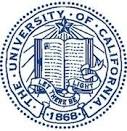
REPUBLISH OUR ARTICLES
We encourage all formats of sharing and republishing of our articles. Whether you want to host on your website, publication or blog, we welcome this. Find out more
Creative Commons Licence (CC BY 4.0)
This work is licensed under a Creative Commons Attribution 4.0 International License. 
What does this mean?
Share: You can copy and redistribute the material in any medium or format
Adapt: You can change, and build upon the material for any purpose, even commercially.
Credit: You must give appropriate credit, provide a link to the license, and indicate if changes were made.
SUBSCRIBE NOW
Follow Us
MORE ARTICLES YOU MAY LIKE
Dr JoLee Sasakamoose – Dr Mamata Pandey | Empowering Indigenous Health: The Indigenous Wellness Research Collaborative in Saskatchewan
The Indigenous Wellness Research Collaborative is a transformative alliance dedicated to advancing health systems and service delivery for Indigenous communities across Saskatchewan. Founded a decade ago and co-led by Dr Mamata Pandey, a research scientist at the Saskatchewan Health Authority, and Dr JoLee Sasakamoose (M’Chigeeng First Nation), Canadian Institute of Health Research Chair in Indigenous Wellness and Health Equity at the University of Regina, their team’s work is rooted in a commitment to Indigenous leadership and community-defined wellness goals. Guided by the Cultural Responsiveness Framework, the Collaborative prioritises creating ethical spaces that serve as a middle ground for respect, reciprocity, and authentic partnerships. The team employs a strengths-based approach to health research, centering Indigenous methodologies that respect the interconnectedness of spiritual, mental, emotional, and physical well-being.
Professor Jaya Krishnan | Revolutionary Gene Therapy Helps Hearts Regenerate After Heart Attacks
Myocardial infarction, commonly termed as a heart attack, is a major cause of death and poor health worldwide. Regenerating heart tissue is an exciting and promising concept that can have significant benefits in myocardial infarctions and related diseases, but this has not yet been achieved in real-life clinical treatments. In a collaboration between Goethe University Frankfurt and Goethe University Hospital, Professor Jaya Krishnan and colleagues address this by controlling pathologic genes involved in the development of heart failure that develops after heart attacks. The researchers demonstrate a new way of treating heart disease by aiding in the division and regrowth of heart cells after a heart attack.
James J. Driscoll, MD, PhD | Immunoproteasome Activation Enhances the Recognition of Tumour Cells and Boosts Anticancer Immune Responses
The correct functioning of the human immune system depends on its ability to recognise danger, such as tumour cells, viruses, and bacteria. Scientists are learning how immunoproteasome activation can overcome the mechanisms by which cancer cells escape immune responses. Immunoproteasomes are small high molecular weight protein-degrading machines that signpost abnormal proteins made by cancer cells, directing the immune system against them. Dr James Driscoll at University Hospitals Cleveland Medical Center is using novel proprietary small molecules to selectively boost the catalytic activity of immunoproteasomes, which increases the tumour killing (or cytotoxic) effect of a group of white cells called T-cells. These findings provide a strong rationale for developing personalised therapeutics that target immunoproteasomes, for cancer and other immune-mediated conditions.
New Approaches to Treating Alzheimer’s Disease
Alzheimer’s disease is a devastating condition that strips away people’s memory, thinking, and independence. By 2050, it is expected to affect over 100 million people around the world, making it a high priority for scientific and medical research. Researchers are now exploring the potential for mechanical and light-based stimulation of the brain and nervous system to treat Alzheimer’s disease symptoms. At the University of Minho in Portugal, Francisca Monteiro is developing a PhD project supervised by a multidisciplinary set of experienced researchers, who have reviewed the evidence behind these approaches, including whole-body vibration, auditory stimulation, transcranial ultrasound stimulation, and photobiomodulation. The team aims to synthesize the evidence to support these treatments and understand what further work is needed.

